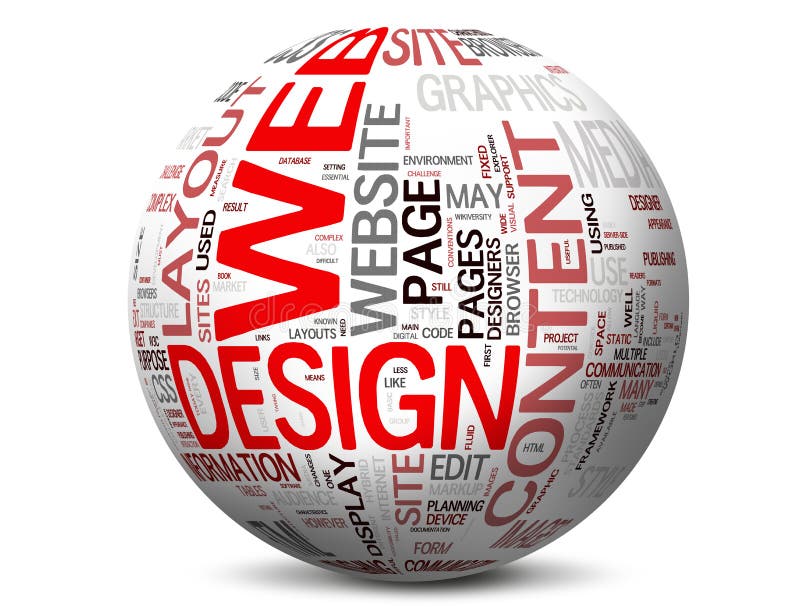Member Info
-
Profile Type: Regular Member
-
Profile Views: 52 views
-
Friends: 0 friends
-
Last Update: 4 hours ago
-
Last Login: 11 hours ago
-
Joined: Mon at 5:16 AM
-
Member Level: Default Level
Updates
Info
Personal Information
- First Name rudysoft
- Last Name superdia
- Gender Male
- Birthday January 13, 1999
Blogs
Posted 6 hours ago
In today’s digital era, a website is often the first point of contact between a business and its audience....
Posted 11 hours ago
Web design has become a cornerstone of online presence in today’s digital world. A well-designed website i...
Forum Posts
-
Posted in the topic The Future of Web Design: Trends, Best Practices, and User Experience in the forum News and AnnouncementsNovember 19, 2025 9:00 AM PST
Introduction In the digital era, a website is often the first impression a business or individual makes online. Web design is no longer just about aesthetics; it’s about creating seamless experiences that engage users, convey brand identity, and drive conversions. Modern web design blends creativity with functionality, making it an essential aspect of digital strategy. The Importance of Web Design Good web design goes beyond attractive visuals. It influences how users perceive your brand, navigate your content, and interact with your services. Poorly designed websites can frustrate visitors, increase bounce rates, and harm your reputation. Conversely, a well-designed website encourages engagement, builds trust, and enhances usability. Key Elements of Modern Web Design Responsive Design – With mobile traffic surpassing desktop, websites must adapt to various screen sizes and devices. Responsive design ensures a consistent experience across smartphones, tablets, and desktops. User Experience (UX) – UX focuses on how users interact with your website. Clear navigation, fast load times, and intuitive layouts are critical to keeping visitors engaged. Visual Hierarchy and Layout – Effective use of colors, fonts, spacing, and imagery guides users’ attention and highlights important information. Accessibility – Inclusive design ensures websites are usable by people with disabilities. Features like alt text for images diseño de paginas web cdmx , keyboard navigation, and readable fonts improve accessibility. Performance Optimization – A slow website can frustrate users and negatively impact search rankings. Optimizing images, reducing code bloat, and leveraging caching are essential for speed. Current Trends in Web Design Minimalism: Clean layouts with ample white space improve readability and reduce distractions. Dark Mode: Increasingly popular for reducing eye strain and giving websites a modern feel. Micro-Interactions: Small animations that enhance user engagement and provide feedback. AI Integration: Personalized experiences using AI-driven content recommendations and chatbots. 3D and Immersive Elements: WebGL and AR technologies create interactive and immersive experiences. Best Practices for Web Design Prioritize mobile-first design. Maintain consistent branding across all pages. Ensure fast loading times with optimized media and clean coding. Test usability regularly to identify and fix friction points. Use analytics to track user behavior and iterate on design improvements. Conclusion Web design is a dynamic field that requires balancing creativity, functionality, and user-centered thinking. By embracing modern trends, adhering to best practices, and prioritizing the user experience, designers can create websites that are not only visually appealing but also effective in achieving business goals. This post was edited by rudysoft superdia at November 19, 2025 9:00 AM PST
-
Posted in the topic Web Design in 2025: Principles, Trends, and Strategies for a Modern Website in the forum News and AnnouncementsNovember 19, 2025 5:54 AM PST
https://blogger.googleusercontent.com/img/a/AVvXsEidoEyqk4egjTc5tIzTNr60BM1cWio2LmMeASIO6PM6a69cfK7i9L5eMdId1VcFa6tDHRzptWBk-3iFBFBGDKwXeOJorIa-F5anewe0hL-cmg4KYt-fmluuIbdzscVtiGOlE17NBjbqE721qJf8UkFy21o50os5PvwOgh1xfsE5HTaLKhCwQC4k0WJdsKI","style":""}" href="https://www.blogger.com/blog/post/edit/8198940038768589495/8923276491984248948?hl=en#">
Web design is more than just arranging images and text on a page—it’s a strategic process that blends creativity, technology, and user experience to create websites that are not only visually appealing but also highly functional. In today’s digital world, effective web design can significantly impact a brand’s credibility, user engagement, and business growth. What Is Web Design? Web design involves planning, creating, and maintaining websites. It encompasses several key areas: Visual Design: The aesthetic aspect, including layout, color schemes, typography, images, and graphics. User Experience (UX): Ensuring visitors can navigate the website easily, find information quickly, and enjoy smooth interactions. Functionality: Integrating interactive features like forms, shopping carts, search tools, and responsive menus. Responsive Design: Making sure websites work well on desktops, tablets, and smartphones. Modern web design focuses on blending these elements to create websites that are both visually striking and user-friendly. Core Principles of Effective Web Design 1. Simplicity and Clarity Keeping a website clean and diseño de paginas web cdmx uncluttered helps users focus on the most important content. Avoiding unnecessary elements reduces confusion and increases usability. 2. Mobile-First Approach With the majority of users browsing on mobile devices, designing for smaller screens first ensures better performance and accessibility. 3. Fast Loading Speed Website performance is critical. Optimized images, minimal scripts, and efficient coding practices help pages load faster, which keeps users engaged and improves search engine rankings. 4. Intuitive Navigation A clear and consistent navigation structure allows users to find what they need quickly. Menus, search bars, and call-to-action buttons should guide visitors naturally through the website. 5. Visual Hierarchy Design elements should guide the user’s attention to the most important areas. Using size, color, contrast, and spacing effectively helps organize content and improve readability. 6. Accessibility Websites should be usable for all people, including those with disabilities. Features such as screen reader compatibility, keyboard navigation, and proper contrast ratios make a site inclusive. Current Trends in Web Design Minimalist and Clean Layouts Minimalism reduces clutter and emphasizes content, creating a professional and modern look. Dark Mode Dark interfaces reduce eye strain, save energy on OLED screens, and are increasingly popular among users. Micro-Interactions Small animations, hover effects, and feedback interactions make websites feel more dynamic and interactive. 3D and Animated Graphics From 3D product renders to interactive illustrations, visual storytelling enhances user engagement. AI-Driven Personalization AI tools can create personalized experiences, such as recommending products, adjusting layouts dynamically, or powering chatbots for instant support. Voice and Gesture Integration Websites are gradually incorporating voice commands and gesture-based navigation to enhance accessibility and modernize interactions. The Importance of Web Design for Businesses Builds Trust: A professional website establishes credibility and trust with visitors. Enhances User Experience: Smooth navigation and fast load times keep users engaged. Boosts Conversions: Clear calls-to-action and organized content encourage user interaction and sales. Improves SEO: Well-structured, responsive websites rank higher in search engine results. Strengthens Branding: Consistent visuals and messaging enhance brand recognition. Best Practices for Modern Web Design Plan Strategically: Define goals, target audience, and content structure before designing. Consistency is Key: Maintain uniform colors, fonts, and layouts across all pages. Optimize Content: Ensure readability and relevance while balancing text, images, and multimedia. Performance Optimization: Compress images, use caching, and reduce unnecessary code to improve speed. Test and Adapt: Continuously test on different devices and browsers to ensure smooth functionality. Use Analytics: Monitor user behavior to refine and improve design over time. Conclusion Web design is an essential aspect of digital success. It combines creativity, technology, and user-focused strategies to deliver experiences that attract, retain, and convert visitors. By following key principles, adopting modern trends, and continuously optimizing, businesses can create websites that not only look great but also perform effectively in a competitive online landscape.
-
Posted in the topic Website Design: Building a Strong Online Presence in the forum News and AnnouncementsNovember 18, 2025 9:24 AM PST
In today’s digital world, a website is more than just an online presence—it is the face of your brand. Good website design is essential for attracting visitors, keeping them engaged, and turning them into loyal customers. A well-designed website combines visual appeal, functionality, and user experience to create a strong impression and boost credibility. Why Website Design Is Important A website is often the first point of contact between a business and its audience. Visitors form an opinion about your brand within seconds of landing on your site. If the design is cluttered, slow, or confusing, users are likely to leave. A professional, clean, and easy-to-navigate website builds trust and encourages visitors to explore further. Key Elements of Effective Website Design 1. User-Friendly Navigation Clear menus and organized pages make it easy for visitors to find the information they need. Simple navigation improves user experience and keeps people on your site longer. 2. Responsive and Mobile-Friendly Design More than half of internet users browse on mobile devices. A responsive design ensures your website adapts to any screen size, providing a seamless experience for all visitors. 3. Fast Loading Speed A slow website can diseño de paginas web cdmx frustrate users and increase bounce rates. Optimizing images, reducing unnecessary code, and using reliable hosting can help your site load quickly. 4. Visual Appeal Colors, typography, and layout affect how visitors perceive your brand. A visually appealing website creates a positive impression and makes your content easier to read and understand. 5. High-Quality Content Content drives engagement and builds credibility. Well-written text, informative articles, and relevant images help visitors understand your brand and encourage them to take action. 6. SEO Optimization Good website design supports search engine optimization (SEO). Clean coding, proper headings, meta tags, and optimized images help your website rank higher on search engines and attract more traffic. Conclusion Website design is not just about aesthetics—it’s about creating an engaging and functional digital experience. A well-designed website improves user experience, strengthens your brand, and increases conversions. Investing in professional website design is essential for businesses looking to succeed in the digital marketplace.